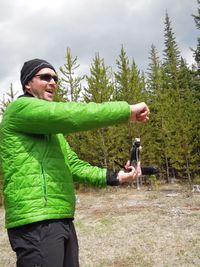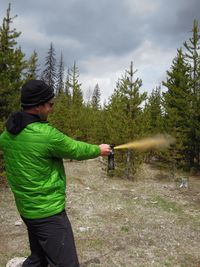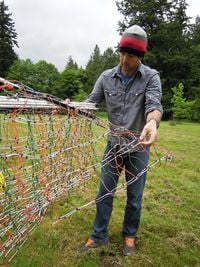In the wake of last summer’s encounter with an Alaskan Grizzly, NOLS spent the winter reviewing our school-wide bear practices. While our bear practices were and are state-of-the-art, this review drew on input from experienced NOLS faculty and outside experts to alter our teaching methods related to bear safety and changed some bear spray practices.
At NOLS Pacific Northwest, courses travel to bear habitat in the Northern Cascades, the Olympics, and the Waddington Range. The Waddington is the only Grizzly habitat, but Black Bears roam much of the northwest wilderness. That’s why the PNW is taking proactive measures for educating students and managing bear interactions in the wilderness.
One key update is the opportunity for students to observe and/or practice using bear spray canisters before going into the field—don’t worry, the canisters aren’t live! Students use test canisters that mimic how a real canister feels when it’s un-holstered, unlocked, and discharged.
Instructor Mike Riley, demonstrating correct activation and use of a bear spray canister.
Another way the PNW is tackling bear safety is through the use of bear fences for food protection. The branch is piloting use of these fences for courses going into the Northern Cascades’ Pasayten Wilderness. The fences are particularly handy in places with few trees for setting up traditional bear hangs. They’re made of a charged wire, and designed to give a quick but powerful shock to bears and other animals that get too close to a course’s food. The shock is strong enough to startle bears and simply scare them away. Effectively protecting human food prevents creating habituated bears that can later become a threat to wilderness travelers.
Left: Program Supervisor Nick Storm, demonstrating correct set-up of a bear fence. Right: Nick testing the shocking power of the fence—he’s wearing shoes, so it’s all good. But don’t expect to be smiling if you’re barefoot like a Grizzly!
Here’s to a fun and safe season in the Northwest!
Written By





